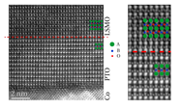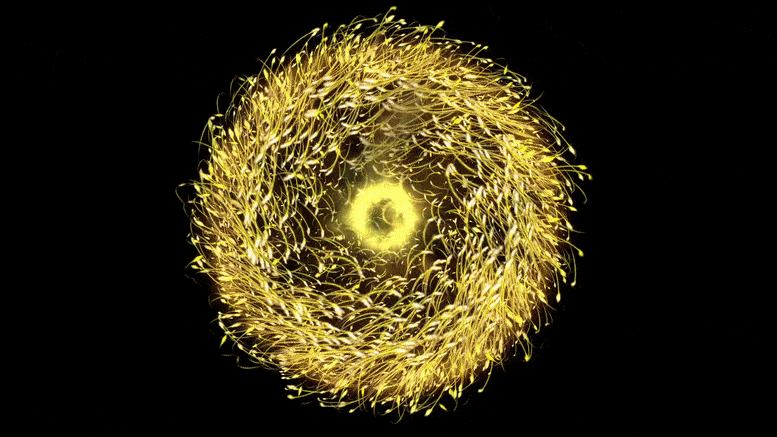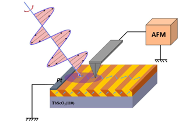Research
We focus on investigations of functional properties of oxide thin films, nanostructure heterostructures and interfaces. We study the physics of system comprising oxide ferroelectrics, magnetics, dielectrics and metals to understand the interaction between the ordering parameters, i.e., polarisation, magnetisation, bound charges, free electrons, and local symmetry.
The following research areas are currently addressed:
Quantum Tunnelling and Ferroelectricity
Using epitaxial strain to stabilise ferroelectricity in few unit cells thick films, we are fabricating ferroelectric and multiferroic tunnel junctions to study quantum tunnelling and the effects ferroelectric polarisation on it. We use RHEED controlled PLD to fabricate atomically smooth ferroelectric and anti-ferroelectric films with thicknesses ranging from 3 to 20 unit cells.
Bulk Photovoltaic Effect
Polar Vortices and Skyrmions in Ferroelectric Heterostructures
It has been recently established that that ferroelectric polarisation forms structures more complex than simple 'textbook' Ising-type domains, and this complexity applies at all length scales. Vortex-type structures are a result of the interaction between the depolarisation field strain field and the innate polarizability of the matrix. Polarisation vortices are usually found in systems in which these fields are deliberately maximised by devoid of screening charges. We are currently investigating curling polarisation structures such as vortices and skyrmions in layered as well as metal-ferroelectric-metal systems.
Domain Walls
Domain walls (DWs) in ferroelectrics have attracted increased attention in recent years due to their unique physical properties, such as enhanced electronic conduction, magnetoelectric coupling, and the capability of the manipulation by external electrical, magnetic or strain field. In particular, they have emerged as key focal interests in the field of photo-ferroelectrics. We investigate in details electronic and functional properties of DWs using different characterisation methods some of them, such photo-induced transient spectroscopy, being specially developed.


Artistic view of the flexo-photovoltaic effect

Artistic view of a Skyrmion

